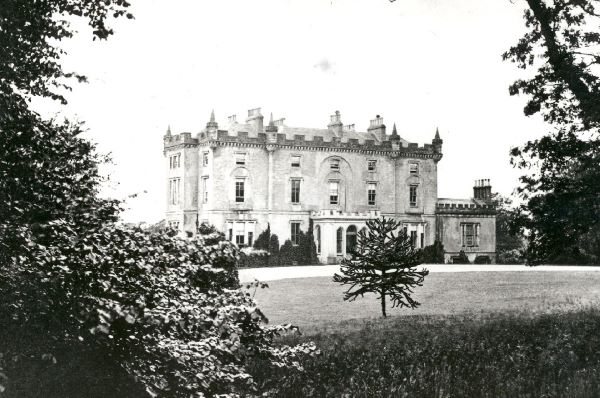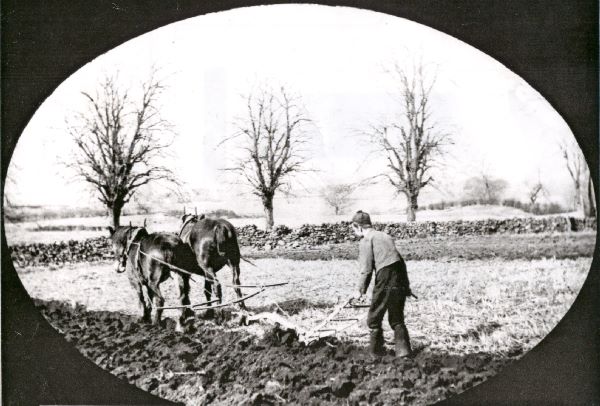

History of Uplawmoor
Read on to discover the origins of Uplawmoor
Uplawmoor is a small village with a long history, much of which was associated with the landowning Mure family. This article will give a general overview of its history, although there is much more to discover.
Early history
Uplawmoor lies about 3 miles south-west of Neilston and is one of the smallest villages in East Renfrewshire. Its name has altered over the centuries, first appearing in a charter of 1294 as ‘Uplayis’ which means the ‘outside place’ probably referring to its location as lying outside the lands of Paisley Abbey.
The Mure family
Uplawmoor had a long association with the Mure family which began in the 14th century, when Godfrey Mure married the heiress of Caldwell. Through this marriage most of the estate of Caldwell fell to Godfrey apart from a smaller part called Wester or Little Caldwell.
The family have an interesting history and have played a key part in many national events: Sir Adam Mure, 4th Lord of Caldwell was killed at Flodden in 1513, supporting James IV; In 1580, Sir Robert Mure was a member of the jury appointed in the trial of Lord Ruthven, for the murder of Mary Queen of Scot’s private secretary David Rizzio and in 1666, Sir William Mure supported the Covenanters and lost the estate after the Battle of Rullion Green.
William fled to Ireland and then Holland and finally died in exile. In the meantime his wife, was imprisoned in Blackness Castle for three years without trial. The estate was forfeited to General Dalziel of Binns but returned to the Mures in 1690 through a special Act of Parliament.
The estate returned to Barbara who was William Mure’s only surviving child. However Barbara died without heirs and so the estate passed to another branch of the family uniting the Caldwell and Glanderston estates.
The Mures continued to play an important role in Scottish affairs. Baron Mure (1718 – 1776) was Baron of the Scottish Court of the Exchequer, MP for Renfrewshire 1742 – 1761 and Lord Rector of Glasgow University 1764 – 65. He was also responsible for the building of the Grade A listed Caldwell House from plans drawn by notable architect of the time, Robert Adam.

Baron Mure’s grandson, William (1799-1860), compiled three volumes of family papers which form a rich source for local historians. Copies of these can be accessed at Giffnock Heritage Centre and at Uplawmoor Library.
The last Mure was Colonel William Mure (1880 – 1912) whose father died at a young age leaving the estate to him as a minor. He took over the running of the estate in 1891 and four years later married Lady Georgina Montgomerie, daughter of the Earl of Eglinton. William volunteered for the 4th Argyll & Sutherland Highlanders, serving at the front in the South African Wars. He was a keen agriculturalist and was President of the Renfrewshire Agricultural Society and held other public offices including: County Councillor, Justice of the Peace for Renfrewshire and Lieutenant Deputy for the County of Ayr. William died at the age of 43 in 1912 and was buried in the family vault in Neilston Parish Church. His death heralded the end of the family’s long ties to the area and the estate was broken up and mostly sold to tenant farmers.
Development of the village
The village of Uplawmoor grew from a small settlement at Neukfoot which was surrounded by a farming community. There were a few early, small scale industries for example, some of the occupants carried out handloom weaving, and some lime and sandstone quarrying as well as coal mining was carried out locally. However, most of the inhabitants worked the land. In the 19th century Uplawmoor was mainly an estate village for workers of the Caldwell estate.

By the start of the 20th century there were two railway stations in the village: Caldwell Station built in 1873 to service the Glasgow, Barrhead and Kilmarnock Railway and Uplawmoor Station built in 1903 which ran trains to Glasgow Central and to Ardrossan. This led to the spread of housing as Uplawmoor became accessible to commuters and larger villas began to appear beside the village cottages.
As the village grew, so too did the demand for amenities. In 1888, the foundation stone for Caldwell Church was laid by Colonel Mure. Prior to this the village had relied on the services of a missionary Mr. Alex Horn to see to their matters of faith but by the end of the 19th century the increase in membership required its own parish.
The first school in the village had been set up in a village hall in 1857 and the children were taught by Mr Watt. However after 1872, the passing of the Education Act made school compulsory for children aged between 5 and 13 and a new school was built in 1877. This has now been converted to residential use as it was replaced by the current building in Tannoch Road in 1968.
Colonel Mure had intended to make Uplawmoor a ‘garden village’. At the time, the Garden Village Movement aimed to create villages which were designed to have a proportionate amount of industry, agriculture and housing and which were intended to create well designed, healthy environments. Unfortunately his untimely deathly prevented his plans from being carried out.
The Mure Hall has long been an important social meeting place in the village. In 1914 Lady Georgina Mure extended the Mure Hall in memory of her late husband and in 1952 it was extended again.
Uplawmoor is still a vibrant community today and has retained its charm and agricultural way of life even in the 21st century.
Further reading
Pride, David, A History of the Parish of Neilston, Paisley, 1910
Semple, Adam, A History of the Parish of Neilston, 1977
Uplawmoor Local Studies Group, Old Uplawmoor, Stenlake, 2004
